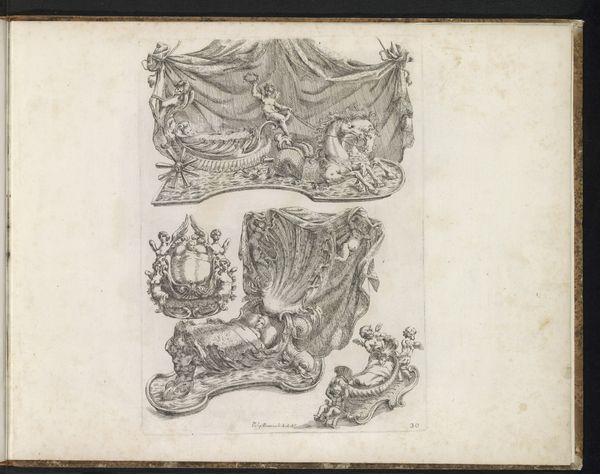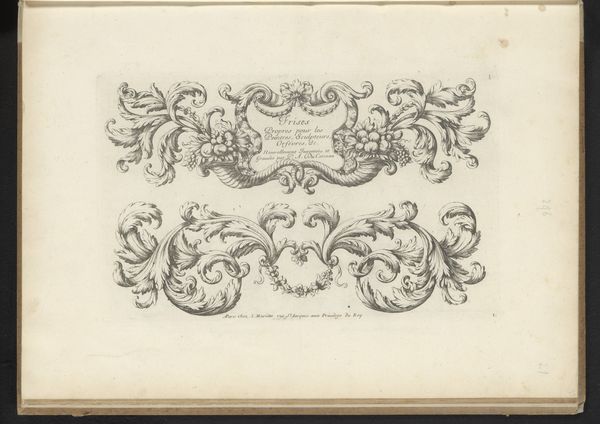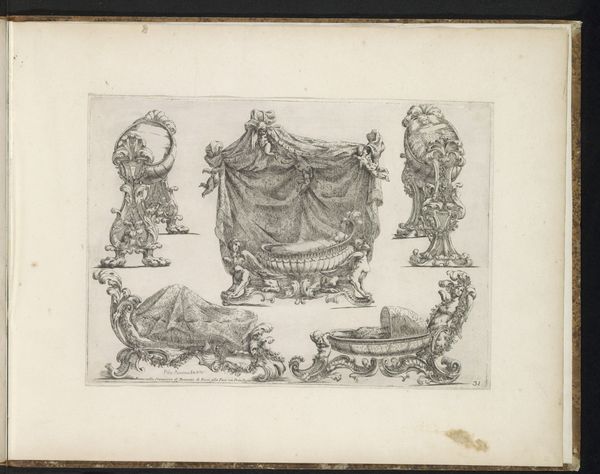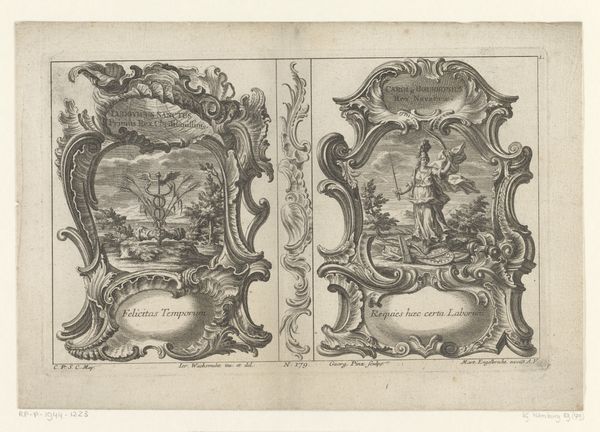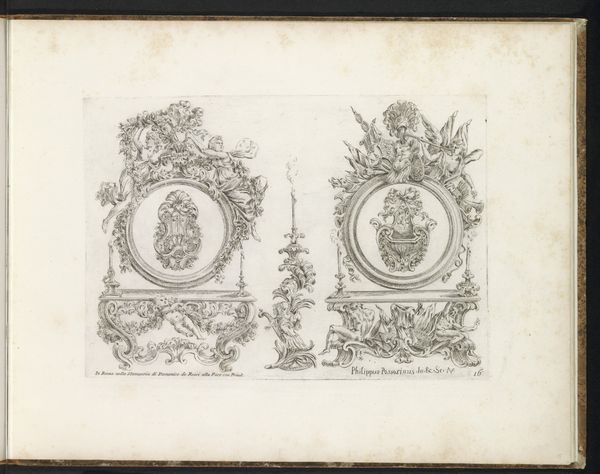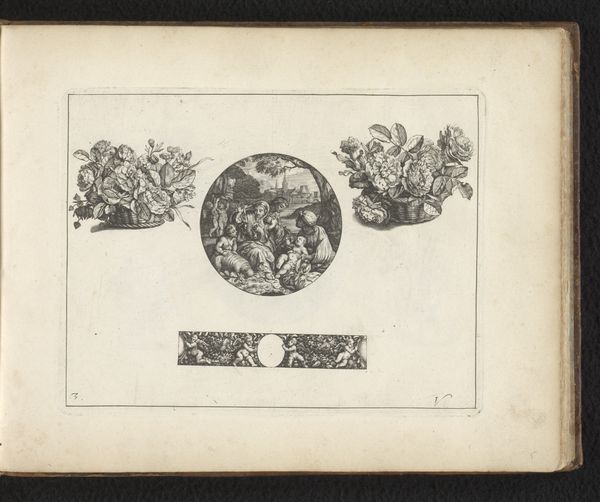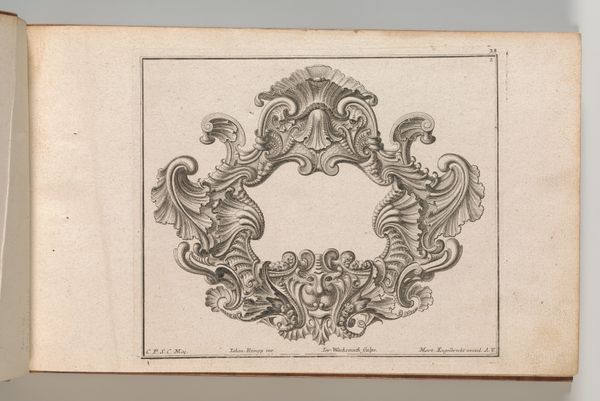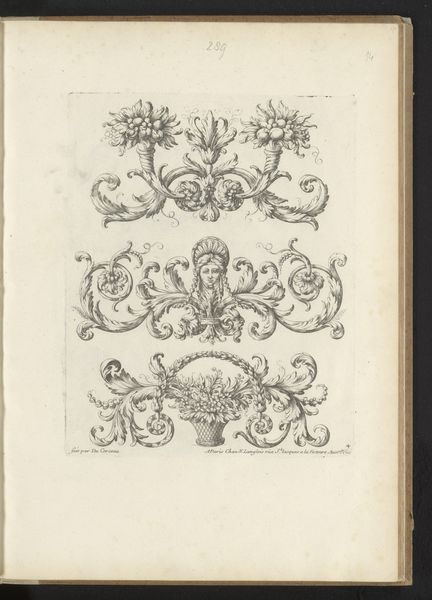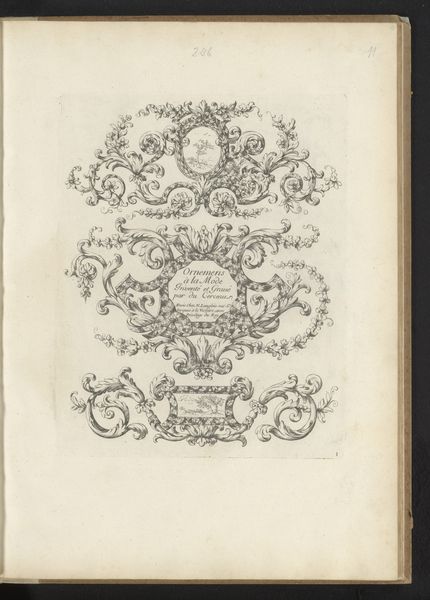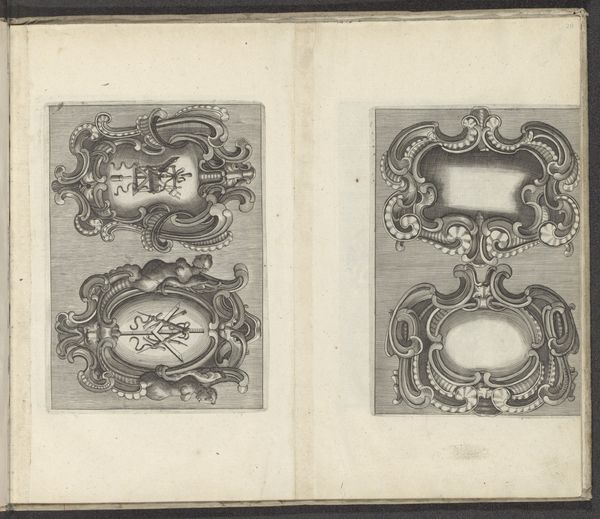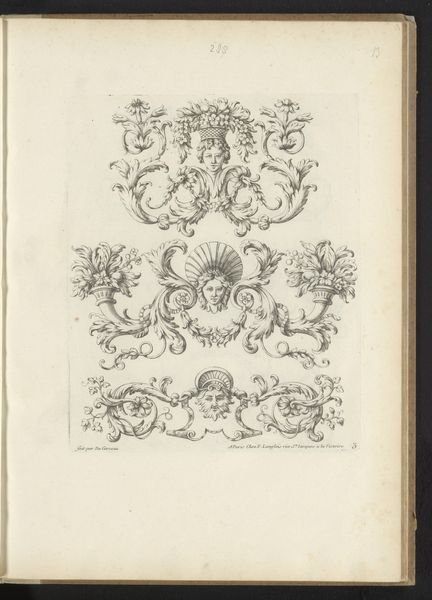
Dimensions: height 135 mm, width 185 mm
Copyright: Rijks Museum: Open Domain
Curator: Today, we're looking at plate 14 from "Livre des plus belles devises…," created in 1697 by Anthonie de Winter. It's an engraving on paper held in the Rijksmuseum. My immediate impression is how densely packed each of the four compartments is—a collection of Baroque emblems and symbols vying for attention. Editor: It does feel claustrophobic, doesn't it? Each section is like a miniature stage set, complete with allegorical figures, animals, and obscure Latin mottoes. It begs the question: what narrative are we supposed to be extracting here? Curator: Each vignette seems to present its own self-contained argument, really. Consider the top left image, with the dove perched above the prone horse, framed by ornate scrolls. The text encircles it – "Maiora Cedimus," roughly "We yield to greater things." Editor: Interesting. I immediately interpreted it as a power dynamic: the church (dove) subduing earthly powers, here embodied by the horse. But let's think about 17th-century Dutch society – was it about yielding to some higher ideal, or was it a reinforcement of hierarchy? Curator: A compelling perspective. Looking at the linear precision in the engravings, I find an attempt to rationalize the world—to neatly package and understand complex ideas. The meticulous detail in the flora and fauna, the consistent framing device across the sections... it all feels ordered and deliberate. Editor: That order could be deceptive. I read a profound ambivalence. Those idealized forms of beauty – putti, heraldic shields, pastoral landscapes – are being deployed in the service of consolidating elite privilege, and the 'moral' instruction served on this print might mask actual exercise of naked force. It becomes clear what kinds of yielding matter and to whom they really apply. Curator: Your points underscore the inherent complexity and that an object may serve to validate some hierarchies at the expense of those at the margins. Seeing how many interpretive possibilities there are based on these different elements gives me a renewed sense of appreciation. Editor: And that’s where I think the beauty lies: in questioning those very structures, allowing us to glean new layers of relevance even centuries later.
Comments
No comments
Be the first to comment and join the conversation on the ultimate creative platform.
